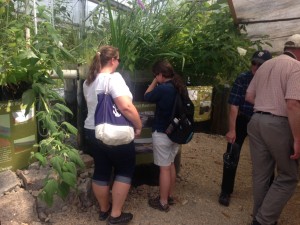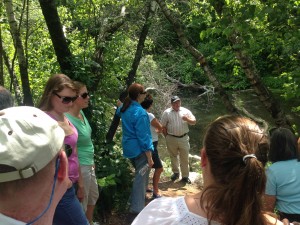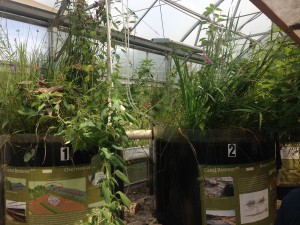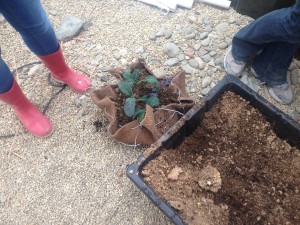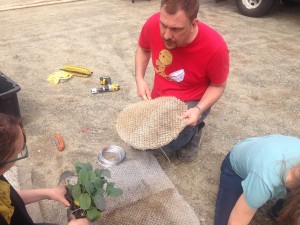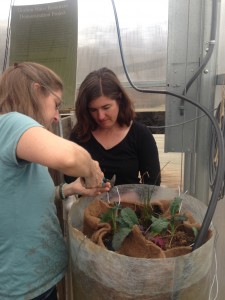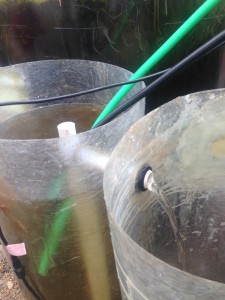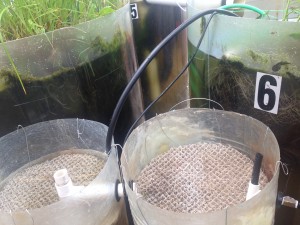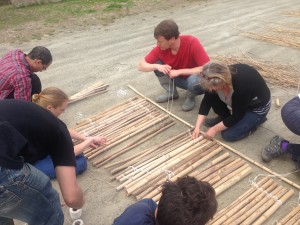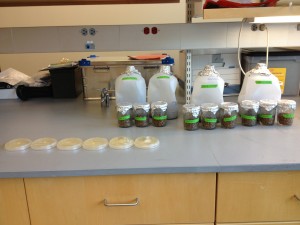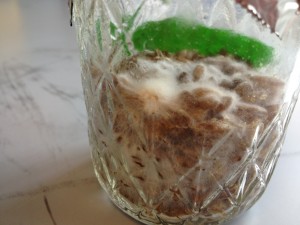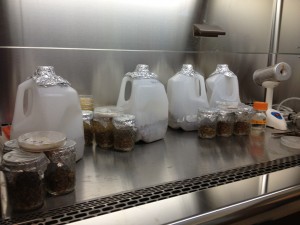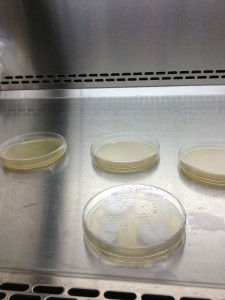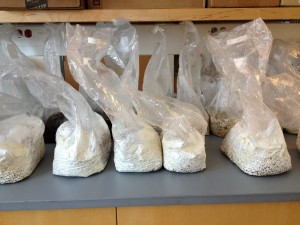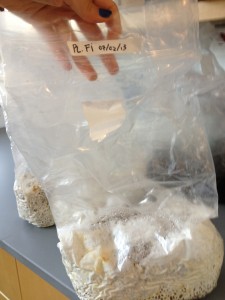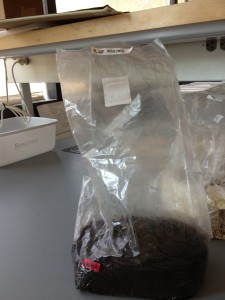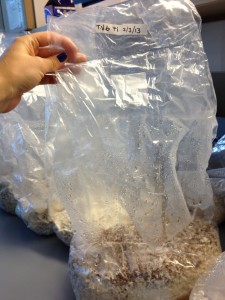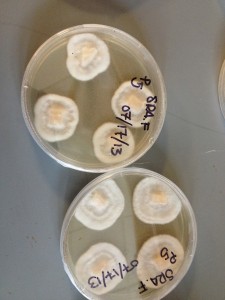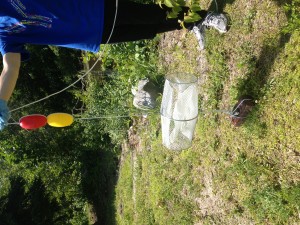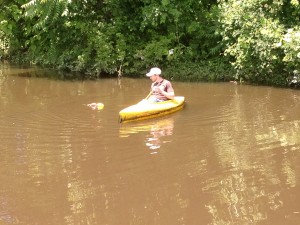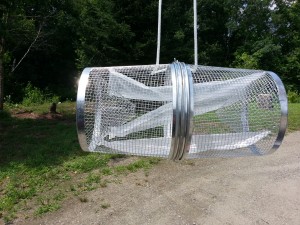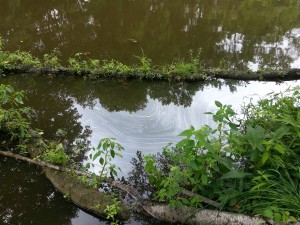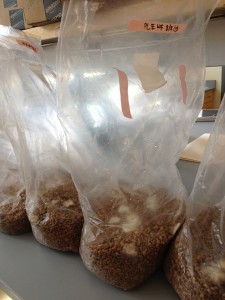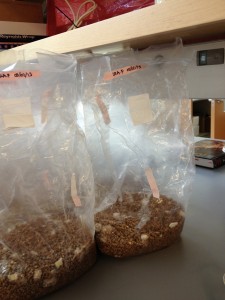A Visit from The URI Coastal Institute Senior Fellows
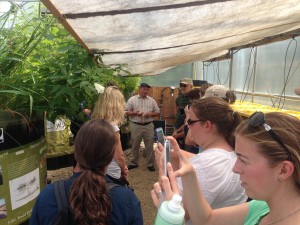 The group includes leaders from NGOs, researchers and policy makers from URI and elsewhere that are committed to the sustainable use and management of coastal ecosystems. They came to the LSL as a part of a trip to learn about the local innovative efforts to improve the health of our natural resources. Gene led the tour of the canal restorers and the greenhouse, and answered the thoughtful questions of the intrigued participants related to ecosystem biodiversity and the tank species self-selection process. Several people of the group were participating in remediation projects already, and were eager to learn of the techniques implemented on the site. One participant said she was even considering the implementation of canal restorer technology in a damaged watershed in Indonesia.
The group includes leaders from NGOs, researchers and policy makers from URI and elsewhere that are committed to the sustainable use and management of coastal ecosystems. They came to the LSL as a part of a trip to learn about the local innovative efforts to improve the health of our natural resources. Gene led the tour of the canal restorers and the greenhouse, and answered the thoughtful questions of the intrigued participants related to ecosystem biodiversity and the tank species self-selection process. Several people of the group were participating in remediation projects already, and were eager to learn of the techniques implemented on the site. One participant said she was even considering the implementation of canal restorer technology in a damaged watershed in Indonesia.
For more information on the URI Coastal Institute Senior Fellows, visit their site: http://web.uri.edu/coastalinstitute/fellows/senior-fellows/
June 17, 2014
How to Build an Eco Machine
On May 2nd and 3rd, John Todd Ecological Design, Inc hosted its first Ecological Design and Aquatic Restorer Construction Workshop at our very own Living Systems Lab. Participants came together from different fields and locales to learn about the basics of ecological design and began to explore some of the social, political and economical challenges of these types of projects. On the second day, the participants had a chance to get their hands dirty and have a crack at designing and building aquatic cells and canal restorers using a new method. In addition to adding local plants, they also planted kale to investigate the potential for aquatic cell agriculture in the greenhouse. One month later, the plants seem to be taking extremely well. Scroll down to see pictures of the new design methods as well as the most recent photos.
Aquatic Cell Design
New Canal Restorer
If you are interested in learning more about Ecological Design, there will be another workshop offered in Grafton August 14th and 15th. Students, community members and people from all professional backgrounds are welcome. Follow this link to the John Todd Ecological Design website to register and for more information.
http://www.toddecological.com/news/workshop.php
June 11,2013
Our first visit of the summer
More Plans 06/27/2013 Today Professor Hibbett and I developed more concrete plans for the Fisherville mycoreactors. We shook the mycelium jugs and jars (this was after a week) some of them, mostly the Irpex, had really taken over the rye grain and shaking them loose was hard. We realized there was a lot that needed to be done, quickly!
- subculturing the pleurotus Professor Hibbett brought on to new plates
- Autoclaving bags on Monday with rye grain and coffee grounds (from Acoustic Java).
- Inoculation on Tuesday
We also realized the water volume in some of the jars was too dry so we need to increase it. – Vanessa Subculturing and Increasing Water Volumes 06/28/2013 Today was the start of our new plans! I autoclaved some water and then added it to the jars of Pleurotus and T. R.G. I added 10ml to each jar. I did this under hood using sterile technique. I also subcultured the Whole Foods Pleurotus onto 4 new MEA plates. – Vanessa
Some Inoculation 07/01/2013 Today I filled 8 bags with rye grain and 5 with coffee grounds. For the rye the ratio was 1L of rye and 900 ml of water per bag. For the coffee the ratio was 2L of coffee grounds and 250ml of water per bag. One bag had 1L and no water added, and another bag had 2L and no water added either. I autoclaved these bags and left them under the hood to cool overnight. – Vanessa The Big Inoculation Day 07/02/2013 Today we inoculated 20 bags of rye with the Irpex, Pleurotus, and Trametes culture we had growing in jugs and jars. The ratio remained 1L of rye to 900 ml of water. It was a very big day because I could only autoclave 12 bags at a time, before they were ready (sterile and cool enough) to inoculate. I used the bag sealer that Gene sent us to seal them. unfortunately 2 bags ripped in the autoclave and I had to throw them out. Nevertheless, the day was a success! -Vanessa The Bags 07/17/2013 After being away for some time I checked on the bags and they’re doing great! It was really impressive to see the mycelium really take over the rye in the bags. One of the bags got some bacteria in it so we need to throw it out. Unfortunately the Pleurotus in the coffee grounds didn’t do as well as the rye.
– Vanessa Subculturing 07/17/2013 We received a package from Fungi Perfecti with Stropharia. I subcultured it onto new MEA plates. I also did a tissue explant onto plates with another Pleurotus strain Professor Hibbett brought. -Vanessa Inoculating 07/22/2013 Today I inoculated 9 bags of rye, each with 1L of rye and 900 ml of water, with the Pleurotus from Fungi Perfecti that we had in a jug. The Stropharia culture on the plates is growing!
-Vanessa More Inoculating 07/28/2013 Today I inoculated six jars of rye (30g of rye and 40 ml of water) with the previous cultures of pleurotus ostreatus strain. – Vanessa Passive Samplers 07/31/2013 Jim Rice sent us information on what he did in the canal with the passive samplers. Here is a brief description he wrote for us.
Inoculating 20 more bags
08/02/2013 Today I inoculated 8 bags with the new stropharia culture we got from Fungi Perfecti. I also Inoculated 12 bags with the Pleurotus Eryngii cultures.
-Vanessa The Big Day 08/07/2013 Today was the big day! Professor Hibbett and I went to the Fisherville site. We took the 23 bags of mycelium inoculated with Irpex, Trametes, and Pleurotus. We joined Gene, his son Nick, and Max from John Todd Ecological Designs. First we cleaned the 23 bins with water. We added about 20 lbs of hard wood pellets (an oak and maple blend). Next we added about four gallons of water to each bin and let the pellets absorbs the water. It was amazing to see the pellets grow with water! We labeled the bins with a labeler that Nick had with the names of each of the fungi. We then gloved up and inoculated the bins with the bags of mycelium. We had to be careful and break apart the mycelium on the rye. It was a really interesting texture: slimy and but very cohesive. We spread out the mycelium in the wood chips as thoroughly as we could.We then carried the bins inside the trailer with air-conditioning and covered them up. The bins are now ready to be placed in the eco-machine.

